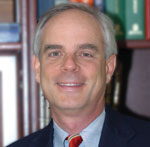Ask Dr. Barber

Q. I have very heavy upper eyelids and the skin hangs down almost to my eyelashes. The weight of the skin makes my eyelids feel tired by the end of the day and I find myself literally holding my eyes open just to read sometimes. I have heard that insurance will pay to fix this problem. Is this true and is the surgery painful?
A. Excess eyelid skin is called dermatochalasia and is a very common problem as we age, however, it does not happen to everyone. As the skin excess worsens, and the skin fold progressively falls down to the eyelashes, vision can be affected, especially peripheral vision. There is a very simple test that the optometrist or ophthalmologist can perform called a visual field test that can determine if one’s vision is being affected. If the test does determine that the vision is being blocked, then insurance companies usually will cover the surgery to remove the fold of skin. The surgery is typically done under twilight anesthesia, meaning you do not have to be completely asleep, and it is an outpatient surgery that takes about an hour.
To answer your question regarding pain, there is very little post-operative pain associated with this surgery. You can expect bruising and swelling for 1-2 weeks, you will need to reduce vigorous activities for about a week, and I recommend my patients take Tylenol® for pain after the surgery. The risks of blepharoplasty are bruising, swelling, asymmetry, over resection of skin leading to the inability to completely close the eyelids, and blindness. Blindness, although a very scary complication, happens extremely rarely (1 in 30,000), and I have never seen this complication in my 25 year practice. An evaluation by your board certified plastic surgeon can help determine if this surgery is right for you.
Q. Four years ago, I developed a Bell’s palsy of the left side of my face. At its worse, I had very little function in most of the left side of my face and I looked like I had suffered a stroke. I was treated for the problem by my family doctor and was told that the function of the muscles would return with time. It has now been over four years, and although my face is much better than it was, I still have residual weakness of the lower part of my face. It still looks like I have had a stroke when I smile. Is there anything that can be done to improve the weakness?
A. Bell’s palsy is thought to be a viral illness that involves the facial nerve. The facial nerve has five main branches supplying the muscles of the forehead, eyelids, cheeks, mouth and neck. Any one, or all, of these branches can be affected by the virus, and which branch(s) of the facial nerve is affected, determines what part of the face experiences weakness. In most cases, the disease is short lived and lasts anywhere from a few weeks to several months or longer. When the nerve to these muscles is involved with the virus, there is inflammation and swelling of the nerve which makes it unable to deliver the impulses to the muscle, therefore preventing proper function. If the nerve does not recover within a year, then the muscles supplied by the nerve can become atrophied and the likelihood that function to the muscle will return diminishes dramatically. This can lead to permanent sagging of the face on one side, which as you said can look like you have had a stroke. For patients whose facial weakness does not get better in a timely fashion, nerve grafts have been tried with some success. Unfortunately after 4 years, your muscles probably will not likely recover even with a nerve graft. In some patients, a facelift can lift and tighten the affected side to give better symmetry of the face. I would suggest that you see an ENT specialist about the status of your Bell’s palsy to see if there is any residual muscle activity remaining and find out if you may be a candidate for nerve grafting to improve muscle function. If nerve grafting is not an option, see a board certified plastic surgeon to investigate whether a facelift may work for you.
——————————
William Byron Barber II, M.D. has been practicing plastic surgery in Greensboro for 20 years and is certified by the American Board of Plastic Surgery. He is Chief of Plastic Surgery for Moses Cone Health System, and is an active member of numerous local, regional and national plastic surgery associations.
Visit his website at: www.BarberPlasticSurgery.com or e-mail him at: AskDrBarber@BarberPlasticSurgery.com
